As known, fierce competition and new digital technologies have provoked an innovation revolution in the consumer electronics segment. Of course, high-tech projectors are no exception. As a result, companies radically expanded their functionality and improved almost all specs, including resolution, compactness, contrast ratio,, brightness, throw ratio, etc.
Of course, the quality of image directly depends on the resolution, which, in turn, affects the detail and sharpness. Therefore, almost all leaders pay great attention to this aspect. As a result, today the market offers a fairly wide range of Home Theater 4K HDR projectors. For example, in 2019, the companies presented BenQ HT3550 (W2000), Epson HC5050UB, Sony VPL-VW295ES, etc.
Resolution
As known, devices use pixels for displaying an image on the screen. The screen of modern models contains millions and more pixels. The number of pixels affects the screen resolution of any device. For example, a screen of 1920 x 1080 (Full HD or Full High Definition or1080p) displays 1920 pixels horizontally and 1080 pixels vertically, creating a grid of 1080 lines. In turn, each row contains 1920 pixels. Accordingly, such images contain a total of 2,073,600 pixels (1920 x 1080).
In recent years, Full HD devices compete fiercely with the more expensive 4K models. But gradually, innovative technologies and new, more efficient processing algorithms reduce the cost of 4K models.
Until recently, companies offered only 4K TVs. However, in the past few years, many companies began to produce relatively inexpensive 4K Home Theater projectors. But this is certainly a pleasant trend, has a slight drawback. Lack of unification and marketing considerations sometimes create confusion in terms.
For example, today companies use several names simultaneously for their 4K models, including 4K-Enhancement, Native 4K, or True4K. Of course, the buyer has a reasonable question about the differences between these technologies.
Native 4K
As known, digital film projectors were the first to start using 4K resolution. These models supported Cinema 4K resolution (4096 x 2160). Such projector provides 4096 pixels horizontally and 2160 pixels vertically. Respectively, they do not use additional image processing and provide a resolution of 8.8 MPix or, more precisely, 8,847,360 pixels. For example, the Sony VPLVW285ES really suppots such resolution.
Such models use DMD (DLP technology) chips with 4096 x 2160 micromirrors or LCD screens with the same number of pixels in 3LCD projectors. Some projectors also use hybrid 4096 x 2160 LCoS chips with functions of DMD (Digital Micromirror Device, Texas Instruments) and LCD chips. Such models instantly pass the 4K signal without pre-processing.
Unfortunately, these models have a high cost, which reaches $ 5,000 and more.
E-shift (1080p Pixel Shifting or wobulation)
The very popular Epson 4K-Enhancement 5040UB refers to e-shift projectors.
These Home Theater models are much cheaper. They provides playback of 4K content, but use DMD or LCD chips with only 1920 x 1080 pixels.
Of course, the 4K playback requires an array with 4096 x 2160 micromirrors or similar LCD screen. But, the production of 4K chips requires very high accuracy, which increases their cost.
Therefore, companies have developed a Wobulation (4K-Enhancement or Pixel Shifting or e-shift) technology that provides 4K resolution support using chips with a resolution of only 1080p or Full HD.
Engineers solved this problem as follows. The projector processes and splits 4K signal into two which a resolution of only 1920 x 1080 pixels. Then, the device alternately projects both pictures onto the screen. But these images are shifted half a pixel relative to each other diagonally. As a result, each pixel has a shift in relation to the pixel of the second picture.
But the viewer perceives these two Full HD pictures as one 4K due to high speed. In fact, the projector displays about 2 MPix x 2 in per cycle. Of course, the e-shift option does not support 3D mode, which also uses alternation of frames for each eye. In this case, the projector automatically disables the wobulation.
True 4K
True 4K supports lower resolution than real 4K. They provide the standard 2160 pixels vertically, but only 3840 (instead of 4096) pixels horizontally. Accordingly, their real resolution reaches only 8.3 MPix (instead of 8,847,360). Companies often call these projectors 4K UHD models. This value corresponds to the 4K TVs. True 4K projectors use two ways to create a projection.
Two-Phase Pixel Shifting
This technology is similar to e-shift. But, these models use a Texas Instruments 0.66″ DMD chip with a 2716 x 1528 pixels. For example, Chinese JMGO U1 has such chip.
Such chip uses a matrix with 2716 x 1528 micromirrors. Each micromirror corresponds to one pixel. The algorithm transforms the input picture into two (4.15 Mpix each). Then, after shifting, it alternately displays two pictures. Of course, each picture contains half of the original. Accordingly, the viewer perceives a picture with 8.3 MPix, which almost corresponds to 8,847,360 native 4K.
Four-Phase Pixel Shifting
These models use a chip with a resolution of only 1920 x 1080p (0.47″ DMD chip). For example, the popular BenQ TK800 belongs to such projectors.
But these projectors divide 4K signal into 4 pictures. Then processor shifts them relative to each other and sequentially displays, switching between them. Accordingly, the sum of four 2 MPix images reaches about 8.3 MPix. But the viewer perceives them as a single picture of 8.3 MPix due to high speed. But physically, the processor simultaneously displays only one quarter of the image.
Conclusion
Of course, all these technologies provide different image quality. But it becomes visually noticeable only when playing quite complex graphics and practically does not appear when playing traditional video.
But in general, the choice of the optimal projector traditionally depends on the budget and personal preferences of the consumer.
This year, Amazon already offers the JVC DLA-NX9 4K Home Theater Projector with 8K / e-Shift for $ 18,000.00. This video demonstrates the world’s first JVC DLA-NX9 projector with 8K e-Shift and other options.
P.S.
While experts continue to argue about the pros & cons e-shift technology, its popularity continues to grow. Today, many even mid-budget 4K UHD projectors, costing about $ 1,000, use e-shift algorithms, increasing the image clarity.
Probably, Japanese giant JVC can be positioned as the leader in this direction. As known, in 2011 JVC Kenwood Corporation was the first to develop 4K e-shift technology, creating a high-resolution 4K matrix on its basis.
Today the company actively offers projectors with 8K e-shift technology, including, for example, the premium DLA-NX9 model.
This projector uses 8K e-shift technology in conjunction with JVC’s Multi Pixel Control (MPC) technology, producing an image with 8K detail (8192 x 4320 pixels).
In fact, MPC algorithms detect the blur generated during shooting, correct the picture and reproduce it at a higher resolution. Curiously, this technology actually creates a higher resolution image compared to the original shooting quality.
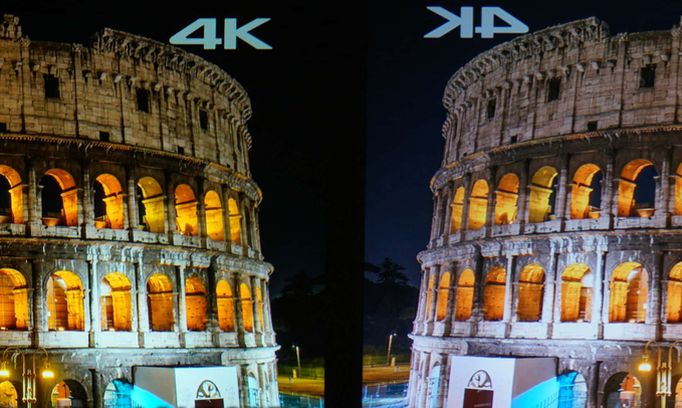
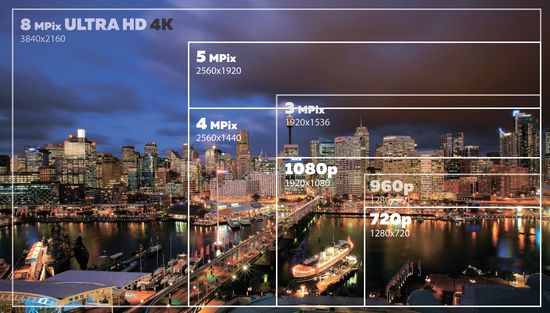
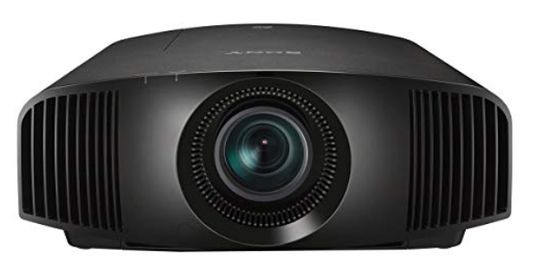
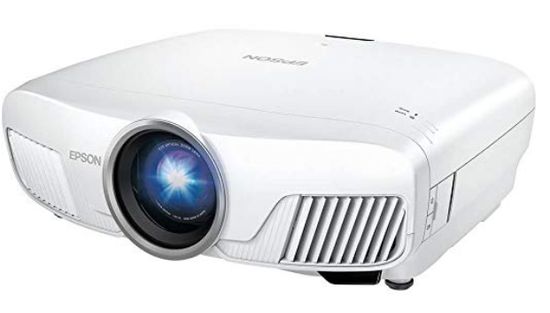
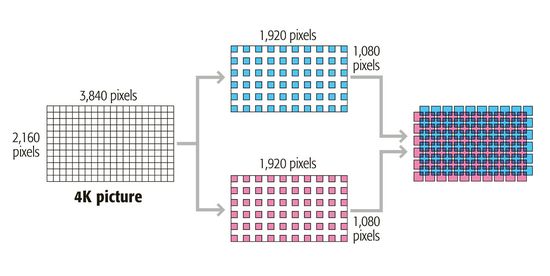
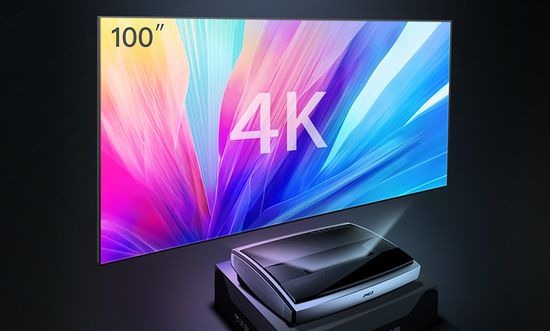
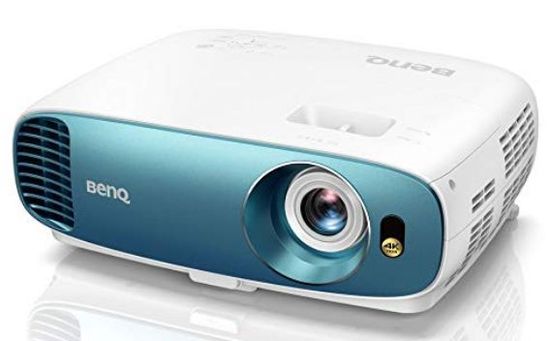

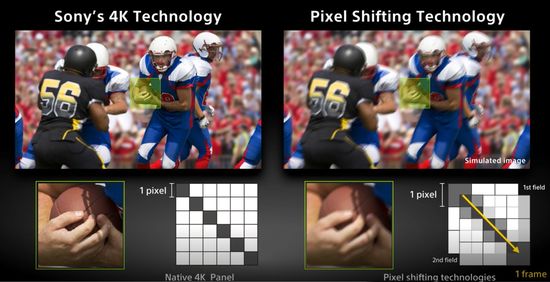
Pingback: Epson EpiqVision LS300 UST projector Review - The Appliances Reviews